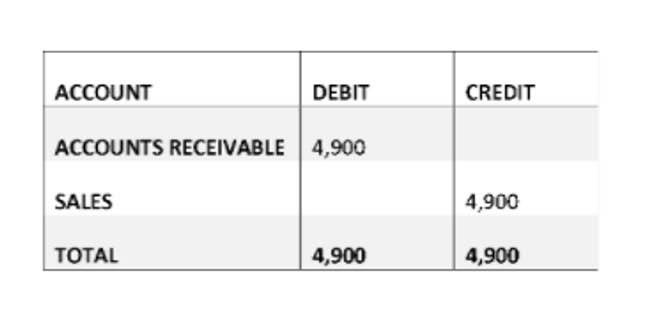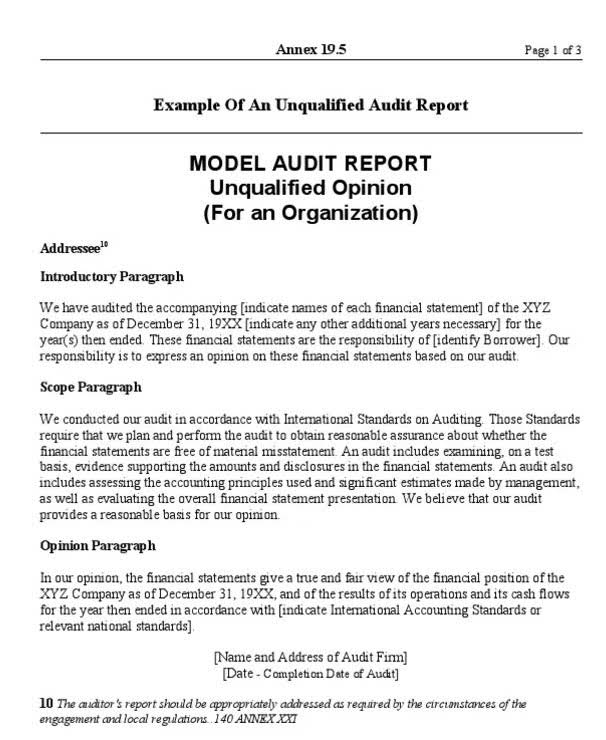¡Tu carrito en este momento está vacío!
Accounts Receivable A R Formula + Calculator

When an account receivable is not paid by a customer past the deadline, it is written off as a bad debt expense. There are few things more frustrating than struggling to give someone money. On paper, this should be a relatively easy task, but overly complicated or error-prone A/R processes can drag out the entire timeline. Conversely, an efficient, honest, and reliable payment process can improve customer satisfaction and even higher sales. Typically, you’ll separate the different types of assets listed on your balance sheet, identifying current assets, fixed assets (e.g., land, buildings, equipment), and other (often intangible) assets. A balance sheet is a financial document that records the assets, liabilities, and shareholder equity of a business at a given moment.
- Our team is ready to learn about your business and guide you to the right solution.
- Starting from Year 0, the accounts receivable balance grew from $50 million to $94 million in Year 5, as captured in our roll-forward.
- Though accounts receivable represent sales a company has made, the money owed is not considered revenue until it has been collected.
- Accounts receivable is any amount of money your customers owe you for goods or services they purchased from you in the past.
- Understand credit balances in accounts receivable, their causes, and solutions.
- AR is also the name of the function responsible for collecting payments owed to the company by its customers.
- IDC MarketScape vendor analysis model is designed to provide an overview of the competitive fitness of technology and suppliers in a given market.
Management

Their day-to-day work balances multiple responsibilities, from keeping accurate financial records to addressing delinquent accounts to maintaining positive customer relationships. In a nutshell, accounts receivable professionals manage the process of converting sales into actual revenue. When the company delivers goods or services to its customers, AR professionals make sure the company bills for those deliveries quickly and accurately—and according to any contractual obligations. If accounts receivable is negative, review for errors like overpayments or misallocations. You need to review transactions, contact the Customers, provide refunds or make adjustments, update your accounting records, and monitor A/R balances. Accounts receivable refers to outstanding payments owed by customers to a business for goods or services provided Mental Health Billing on credit.
Accounts Receivable vs Accounts Payable
- And don’t shy away from those tough love moments; if a client habitually pays late, it might be time to part ways.
- The ending balance on the trial balance sheet for accounts receivable is usually a debit.
- The assumptions are extended (i.e. “straight-lined”) across the entire forecast, until a revenue balance of $350 million is reached by the end of Year 5.
- The debit to the cash account causes the supplier’s cash on hand to increase, whereas the credit to the accounts receivable account reduces the amount still owed.
- By implementing effective credit policies, timely invoicing, and leveraging AI-driven solutions like Emagia, businesses can optimize AR processes, reduce risks, and ensure a steady cash flow.
- Clearing a negative balance in accounts receivable depends on what caused the negative balance.
- Timely management of accounts receivable is critical for maintaining cash flow and ensuring a steady income stream.
Includes loans to employees, tax refunds, or insurance claims that a company expects to receive. Our software is trusted by companies like Patagonia, Smartsheet, Datanyze, and more. You can discover firsthand what makes InvoiceSherpa so special through a 14-day free trial, too – you’ve got nothing to lose. Are you making critical business decisions, like whether to hire a new employee or buy new equipment, based… Business owners who invoice at a high volume often find themselves repeating the same tasks over and over again when creating invoices from scratch.
Payment terms

In the example below, you can see how AR is portrayed on the balance sheet in one of CFI’s financial models. The IRS’s Business Expenses guide provides detailed information about which kinds of bad debt you can write off on your taxes. Accounts payable on the other hand are a liability account, representing money that you owe another business.
Download our case study on how Danone improved working capital by recovering $20M from invalid deductions with A/R automation. What does it mean if receivables are in negative and increasing.I mean more negative.From -100 to -200. The assumptions are extended (i.e. “straight-lined”) across the entire forecast, until a revenue balance of $350 million is reached by the end of Year 5. In our illustrative example, we’ll assume we have a company with $250 million in revenue in Year 0. By submitting this form, you consent to receive email from Wall Street Prep and agree to our terms of use and privacy policy. These articles and related content is the property of The Sage Group plc or its contractors or its licensors (“Sage”).
Cash
- A healthy accounts receivable speaks volumes about the overall financial health of a business.
- Tracking accounts receivable is crucial to maintain the ongoing and future cash flow of the business.
- Similar to a line of credit extended to a customer, accounts receivable serves as a payment agreement between your business and its clients.
- Expanding the amount of credit offered to customers can mean that a firm’s bad debts increase.
- Managing AR effectively is essential to ensure a business’s financial health.
At the end of the year, the AR T-account is added up and transferred to the financial what does accounts recievable mean statements. Managing AR effectively is essential to ensure a business’s financial health. Companies often offer credit terms to their customers as a competitive tool, but this practice can lead to a build-up of AR. When a business sells goods or services but doesn’t collect the payment immediately, it creates an accounts receivable. This system is common in many industries, particularly where credit terms are offered to customers. The receivables are typically due within 30, 60, or 90 days, depending on the agreement between the business and the customer.
What are some best practices for managing accounts receivable?
This number is also your new starting accounts receivable balance for the following month. Accounts receivable (AR), or receivables, is the amount of money your customers currently owe you for things you have already sold to them. Essentially, it’s a total of all invoices you have given to customers that have not been paid yet.
What Is the Receivables Turnover Ratio?

Send out payment reminders to customers automatically as invoices become due and offer easy self-service options for your clients’ convenience. If a company is slow https://technograms.com/2021/07/05/dgl-bookkeeping-services-updated-august-2025-san/ to pay once, it’s possible they’ll make a habit of it. It’s standard practice to decide on a cut-off period—say, 90 or 120 days—at which point you will do no further business with the late payer until the debt is settled. This shows that you’re serious, which can sometimes be enough to nudge customers into paying. But what if that $5,000 payment arrives so late that you’ve already written it off as a bad debt?
Track accounts receivable to help manage cash flow
Receivables are debts owed by customers to a company for purchased services or products on credit. A/R is recorded as an asset on the balance sheet until they are collected or written off. The accounts receivable balance provides a snapshot of a company’s financial stability, indicating how well it’s collecting payments and its ability to convert sales into cash. If you’re looking for the receivables accounting definition, you’re in the right place. Accounts receivable, also referred to AR, is an accounting term that refers to the money that’s owed to a business for any goods or services it has delivered but hasn’t yet received payment. This is considered an asset to the company and it is the opposite of accounts payable, or money that the company owes but hasn’t been paid.
por
Etiquetas:
Deja un comentario